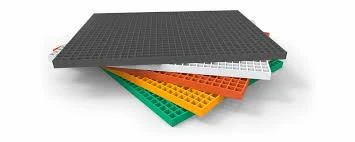
-
 Afrikaans
Afrikaans -
 Albanian
Albanian -
 Amharic
Amharic -
 Arabic
Arabic -
 Armenian
Armenian -
 Azerbaijani
Azerbaijani -
 Basque
Basque -
 Belarusian
Belarusian -
 Bengali
Bengali -
 Bosnian
Bosnian -
 Bulgarian
Bulgarian -
 Catalan
Catalan -
 Cebuano
Cebuano -
 China
China -
 China (Taiwan)
China (Taiwan) -
 Corsican
Corsican -
 Croatian
Croatian -
 Czech
Czech -
 Danish
Danish -
 Dutch
Dutch -
 English
English -
 Esperanto
Esperanto -
 Estonian
Estonian -
 Finnish
Finnish -
 French
French -
 Frisian
Frisian -
 Galician
Galician -
 Georgian
Georgian -
 German
German -
 Greek
Greek -
 Gujarati
Gujarati -
 Haitian Creole
Haitian Creole -
 hausa
hausa -
 hawaiian
hawaiian -
 Hebrew
Hebrew -
 Hindi
Hindi -
 Miao
Miao -
 Hungarian
Hungarian -
 Icelandic
Icelandic -
 igbo
igbo -
 Indonesian
Indonesian -
 irish
irish -
 Italian
Italian -
 Japanese
Japanese -
 Javanese
Javanese -
 Kannada
Kannada -
 kazakh
kazakh -
 Khmer
Khmer -
 Rwandese
Rwandese -
 Korean
Korean -
 Kurdish
Kurdish -
 Kyrgyz
Kyrgyz -
 Lao
Lao -
 Latin
Latin -
 Latvian
Latvian -
 Lithuanian
Lithuanian -
 Luxembourgish
Luxembourgish -
 Macedonian
Macedonian -
 Malgashi
Malgashi -
 Malay
Malay -
 Malayalam
Malayalam -
 Maltese
Maltese -
 Maori
Maori -
 Marathi
Marathi -
 Mongolian
Mongolian -
 Myanmar
Myanmar -
 Nepali
Nepali -
 Norwegian
Norwegian -
 Norwegian
Norwegian -
 Occitan
Occitan -
 Pashto
Pashto -
 Persian
Persian -
 Polish
Polish -
 Portuguese
Portuguese -
 Punjabi
Punjabi -
 Romanian
Romanian -
 Russian
Russian -
 Samoan
Samoan -
 Scottish Gaelic
Scottish Gaelic -
 Serbian
Serbian -
 Sesotho
Sesotho -
 Shona
Shona -
 Sindhi
Sindhi -
 Sinhala
Sinhala -
 Slovak
Slovak -
 Slovenian
Slovenian -
 Somali
Somali -
 Spanish
Spanish -
 Sundanese
Sundanese -
 Swahili
Swahili -
 Swedish
Swedish -
 Tagalog
Tagalog -
 Tajik
Tajik -
 Tamil
Tamil -
 Tatar
Tatar -
 Telugu
Telugu -
 Thai
Thai -
 Turkish
Turkish -
 Turkmen
Turkmen -
 Ukrainian
Ukrainian -
 Urdu
Urdu -
 Uighur
Uighur -
 Uzbek
Uzbek -
 Vietnamese
Vietnamese -
 Welsh
Welsh -
 Bantu
Bantu -
 Yiddish
Yiddish -
 Yoruba
Yoruba -
 Zulu
Zulu
frp clarifier system
Understanding FRP Clarifier Systems An Overview
FRP clarifier systems, short for Fiberglass Reinforced Plastic clarifier systems, have emerged as a popular solution for treating wastewater across various industries. Their unique properties and advantages make them ideal for applications where corrosion resistance, lightweight, and durability are crucial. In this article, we will explore the workings, benefits, and applications of FRP clarifier systems.
What is an FRP Clarifier System?
An FRP clarifier system is a type of water treatment device specifically designed to separate solids from liquids. The primary function of a clarifier is to facilitate sedimentation, allowing suspended particles in the water to settle due to gravity. The system consists of a cylindrical tank made from fiberglass-reinforced plastic, which offers superior durability and resistance to a wide range of chemicals and environmental conditions.
Components of the System
The typical FRP clarifier system includes key components such as the clarifier tank, influent and effluent piping, sludge collection mechanisms, and various ancillary equipment for monitoring and control. The tank's design allows for efficient flow management, promoting the settling of solids while ensuring that clear water exits through the effluent system.
Advantages of FRP Clarifier Systems
frp clarifier system

1. Corrosion Resistance One of the main advantages of using FRP materials is their inherent resistance to corrosion, which is crucial in industrial wastewater treatment where harsh chemicals are often present. This characteristic extends the lifespan of the equipment and reduces maintenance costs.
2. Lightweight and Easy to Install Compared to traditional steel clarifier systems, FRP units are significantly lighter, making them easier to transport and install. This feature is particularly beneficial in locations where heavy lifting equipment may not be available.
3. Cost-Effectiveness The longevity and low maintenance needs of FRP systems can translate into cost savings over time, especially when considering the reduced need for repairs and replacements.
4. Versatile Applications FRP clarifier systems find use in various industries, including food and beverage processing, pharmaceuticals, petrochemicals, and municipal wastewater treatment. Their versatility makes them suitable for a wide range of applications where water quality is a concern.
Conclusion
In conclusion, FRP clarifier systems stand out as an efficient and reliable solution for wastewater treatment. Their corrosion resistance, lightweight nature, and cost-effectiveness contribute to their growing popularity in many industrial sectors. As industries continue to face stringent regulations regarding water quality, the adoption of advanced clarifier systems such as those made from FRP will likely increase. The ongoing advancements in material science and engineering will further enhance the performance and capabilities of these systems, ensuring they remain a critical component in the quest for sustainable and effective wastewater management.
Latest news
-
Exploring the Benefits of Top Hammer Drifter Rods for Enhanced Drilling PerformanceNewsJun.10,2025
-
High-Precision Fiberglass Winding Machine for GRP/FRP Pipe Production – Reliable & Efficient SolutionsNewsJun.10,2025
-
FRP Pipes & Fittings for Shipbuilding - Corrosion-Resistant & LightweightNewsJun.09,2025
-
Premium FRP Flooring Solutions Durable & Slip-ResistantNewsJun.09,2025
-
Premium Fiberglass Rectangular Tanks Durable & Lightweight SolutionNewsJun.09,2025
-
Tapered Drill String Design Guide Durable Performance & UsesNewsJun.09,2025









